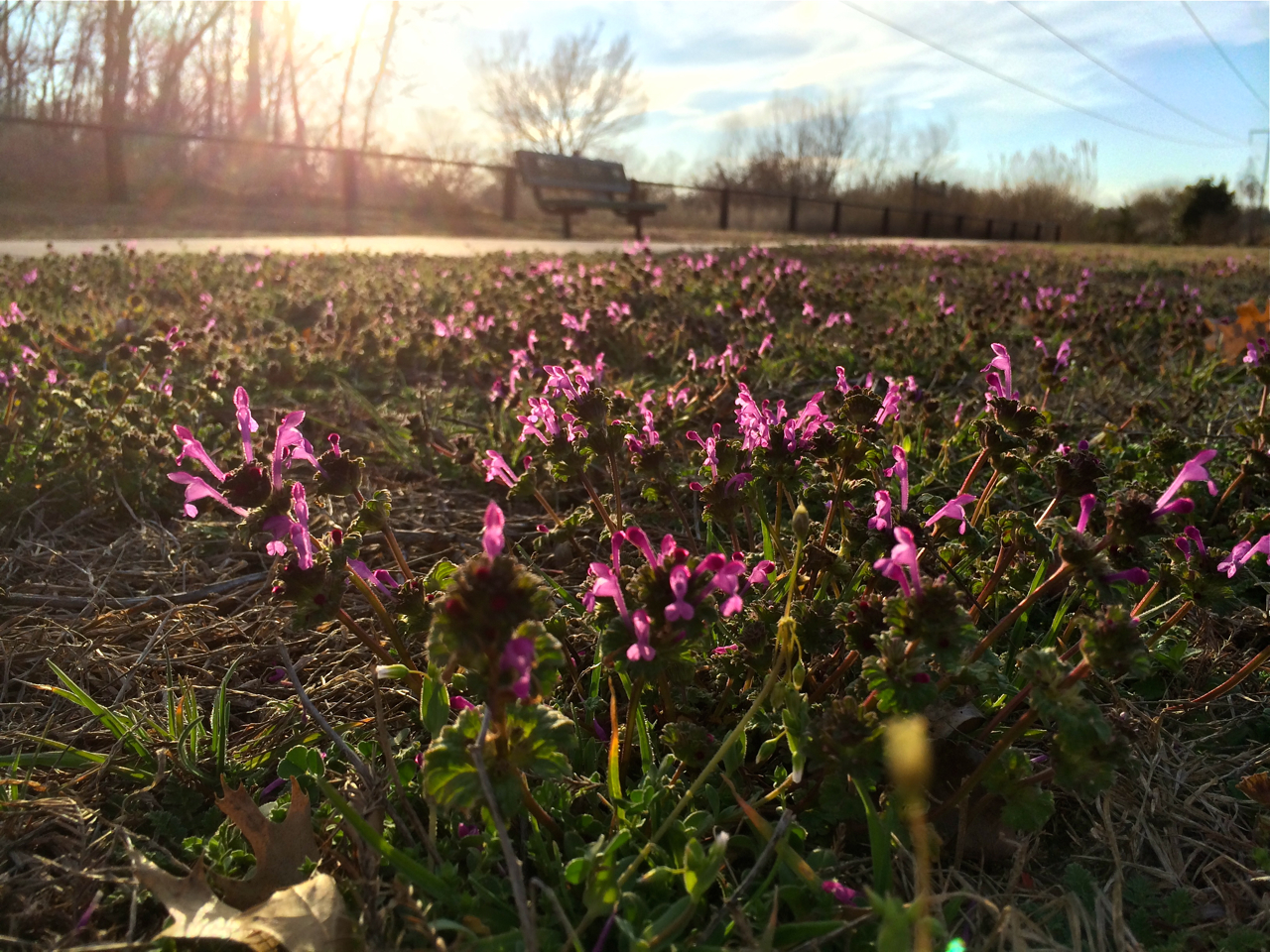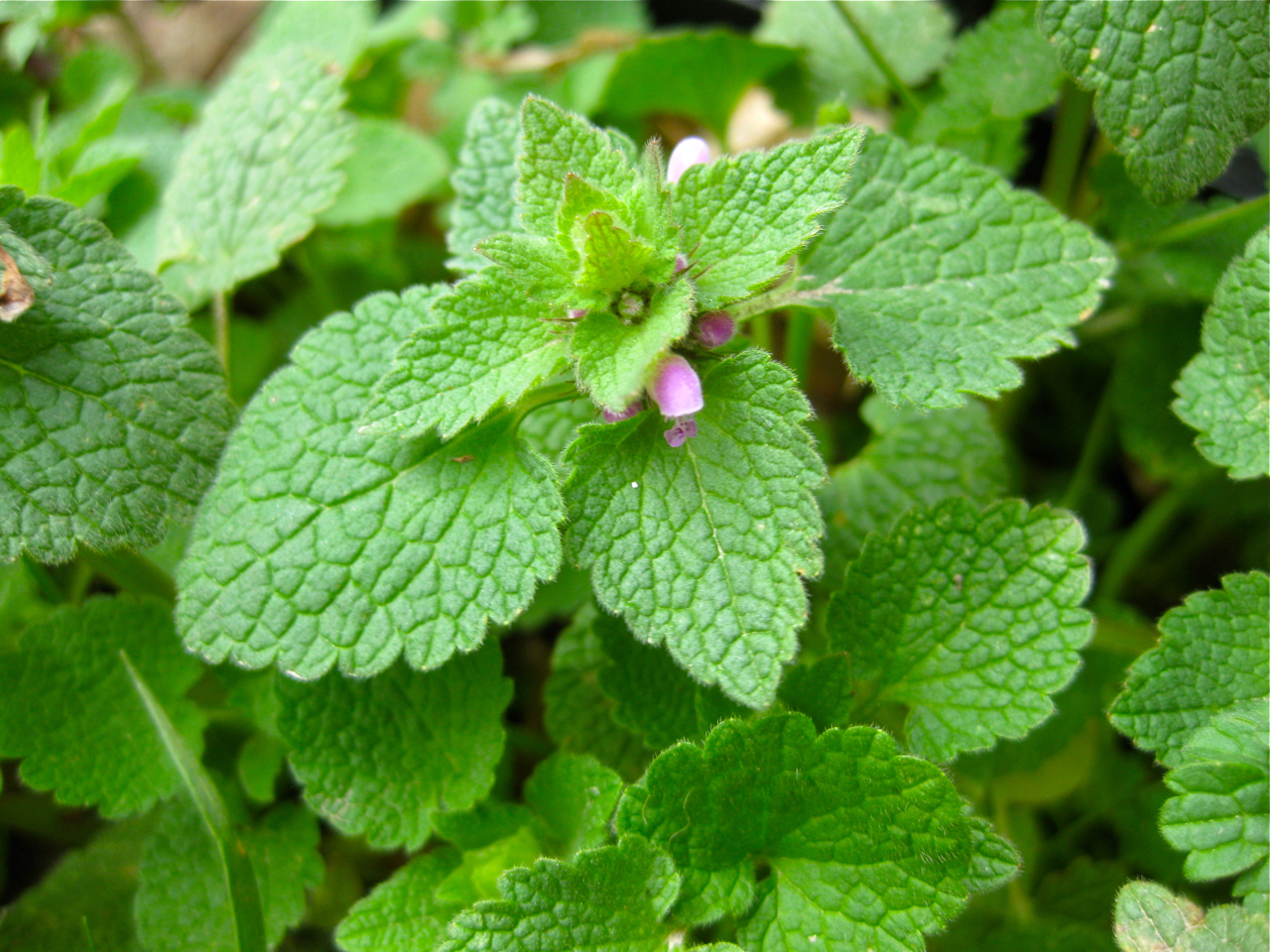It’s springtime and as the soil and air temperatures begin to warm many opportunist plants get a jump on things and become “weeds” in disturbed places. Though they may seem to be a nuisance upon closer inspection they provide many benefits to wildlife and man. So before you get out your weed eater, garden gloves or, god forbid, your herbicide of choice, consider eating, appreciating and using these weeds. The following is a brief introduction to some of the more common spring weeds and their uses.
Henbit (Lamium amplexicaule)– This ubiquitous flowering spring weed is such a pan global migrant that it’s exact place of origin is not known. It is thought to have originated in the Mediterranean and it has long been naturalized in the U.S. Like many such weeds it thrives mainly in places of human disturbance so it’s not much of a threat to healthy native vegetation. As weeds go, this one provides many benefits, so it is worth considering it’s values. First to consider are the lovely blossoms which can paint a whole field bright magenta in Spring. I have even observed the color from a plane! Upon closer inspection the flower has a beautiful orchid like appearance. These lovely little flowers provide an early nectar and pollen source for bees and pollinators. Secondly the whole plant is edible! It can be eaten raw or cooked and has a somewhat mild flavor similar to many common greens (lettuce and kale come to mind). It can be good in salads, soups, wraps or even green smoothies. It has a ton of vitamins and as an anti-rheumatic herbal solution.
Dead Nettle (Lamium purpureum) – Dead Nettle is a very similar European relative of henbit. They can often be found growing together and they provide many of the same benefits. The best way to differentiate between the two is that Dead Nettle has more triangular shaped leaves and Henbit’s are more heart shaped. Dead Nettle also tends to have dark purple leaf coloration toward the top of the plant. Eat and prepare in the same way you would Henbit
Chickweed (stellaria media) – Another common lawn weed that tastes good and is good for you. It can be eaten raw and it has the texture of corn silk, it makes a great addition to salads, and when cooked it kind of tastes like spinach. Since chickweed is stringy it is often best to chop it up. Chickweed does contain small amounts of saponins so it is best eaten moderately.
Dandelion (Taraxacum officinale) – Another pan global opportunist, Dandelion is a staple of springtime and can be a staple of the everyday diet. Dandelion is another one that can be eaten raw or cooked. They are a little bitter so picking the smaller leaves can help make it a little more palatable. Blanching the leaves will also help reduce bitterness. Dandelion leaves can be wilted or steamed and the flowers are edible too. The flowers have a fairly sweet taste and crunchy texture which goes well in salads. They can be used to make dandelion wine as well. If that was not enough, the roots can be dug up and used as a substitute for coffee. The whole plant also has medicinal benefits, in particular known to detoxify the liver. In Europe, Dandelions are often grown as a garden green and numerous cultivars are available.
These are only a few of the many plants available for foraging so do some research and find out what plants are in the neighborhood. When picking and consuming edible weeds it is important to be very cautious because some plants look like others (do your research carefully!!). As a word of caution it is best to eat wild foods in moderation, especially when beginning. These plants have very concentrated nutrients compared to their cultivated counterparts so it can take a while for your body to adjust to eating them. If any area has been subjected to chemicals of any sort then it is best to avoid eating anything taken from that area. Happy hunting and Bon Appétit!!
Ps. If you’ve eaten your fill of edible weeds and still have too many, give us a call for some garden maintenance.
For more information on foraging Oklahoma edibles of all kinds visit:
Oklahoma Wildcrafting
more general information and good photos for ID can be found here:
Eat The Weeds





